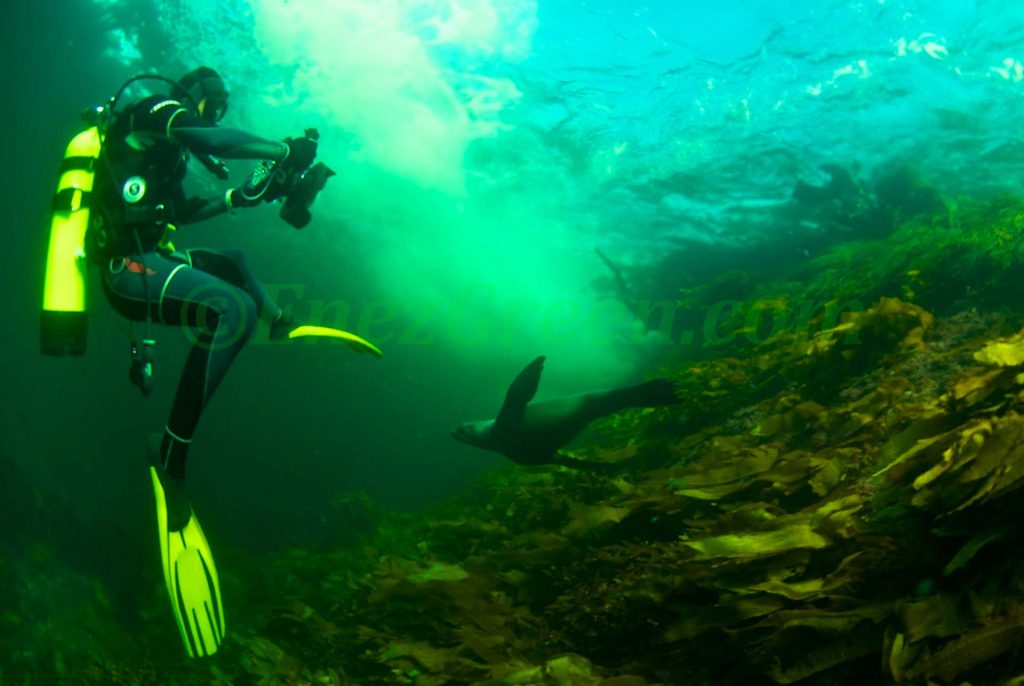Fur seals were nearly hunted to extinction
It was at that time in the early 1800s that began the terrible hunt for fur seals in the Fiorland, decimating these mammals prized for their fur and blubber. Hundreds of thousands of animals perished at the hands of hunters, one of the most famous of whom was Captain John Grono. A bay in the fjord is today named after him in memory of the base he established on Secretary Island close to the colonies of Nee and Shelter Islands.
Two centuries later, the site still has the largest colony of fur seals in Fiordland, where unfortunately only a tiny part remains. The Government of New Zealand took action at the last minute for the conservation of the species which was on the brink of extinction in 1875. It was not until 30 September 1946 that the hunting season was closed for good and that New Zealand fur seals were finally provided sustainable protection.
We try to wipe away these images of massacre and watch the mammals peacefully basking on the black shale rocks.
Fur seals are easily recognised by their thick fur, their long whiskers and their small pointed ears – ‘otarion’ means small ears in Greek. This characteristic distinguishes them from seals, which have internal ears. While their double fur is welcome in winter, this protection becomes cumbersome on hotter days. Among other things, this explains why, unlike sea lions, fur seals can often be seen sleeping on wet rocks rather than on the sandy beaches. The body of fur seals, which are also part of the Otariidae family, is, however, less massive than that of sea lions.
Playing hide-and-seek in the water with fur seals
Snorkelling with fur seals is included in our cruise programme and we are looking forward to donning our flippers, goggles and snorkels. A briefing session with our by our skipper, the diver Lance Shaw, is compulsory before entering the water. According to him, discreetly approaching the mammals is key to any encounter. ‘You must snorkel very slowly and wait for the mammals to come to you. It is pointless to insist if it does not move; it just means that the timing is not right.’ You must keep in mind that this is an encounter with a wild animal.
We enter the ice-tea-coloured water – stained that colour from the tannin deposited by heavy rainfall carrying decaying vegetation from the rainforest. We quietly move in a beautiful wilderness setting of rocks and kelp forests washed by the gentle surf, which are home to many species of friendly fish. While browsing among the algae and small holes in the rocks, we come across a pod of lobster with their antennas raised as if preparing for an attack. On my way back to the surface of the water, I come almost face to face with a juvenile fur seal which must have been watching me for a while! I remain still and enjoy this final moment; it stares out at me with its large, bulging eyes and then disappears to reappear a few seconds later behind me. I give a sign to my dive partner and it takes us a few flipper strokes to reach a sort of bank lined with kelp through which a couple of fur seals surreptitiously disappear. Let the show begin! New Zealand fur seals (Arctocephalus forsteri) are sea mammals that are particularly comfortable in the water and we will have plenty of opportunities to confirm that.
Agile and mischievous sea mammals
We admire their incredible agility under water and their ability to change direction as quickly as Speedy Gonzalez, the fastest mouse in Mexico. They owe this ability to their very flexible body, and their forelimbs are excellent swimming appendages. Unlike seals which swim in undulating patterns, fur seals use their entire body to move in the water, particularly these long swimming appendages. This is a cartoon-like show!
These juveniles are not very shy and move closer to us, brushing against us to our great joy. I remember Lance’s advice, ‘Even if it is quite tempting, do not touch them; you must avoid disturbing them especially because you never know how they will react’. From above the surface of the water, a few adults lying on rocks warmed by the sun seem to be watching over our games of hide-and-seek. We position ourselves on the edge of a small bank at two metres deep. These two fur seals are the only ones of the group to approach us; our presence seems to amuse them and here they are again, swimming fast and looping around in front of us, swooping down, playing with each other. This is a hilarious scene but we need to stop the interaction in compliance with regulations in force in order to leave our underwater companions with enough energy to go fishing at night. They will need their strength force even more now that their prey, which are also fished by industrial fleets, are becoming harder to find.
After getting back on board, we watch the fur seals from the boat and notice that they move with the same ease on land, unlike seals. Like many sea mammals, fur seals had a land-based ancestor between 20 and 24 million years ago and are an example of a return to aquatic life.
Respecting the animals’ daily rhythms and seasonal migrations
As is the rule among pinnipeds, fur seals are polygamous: a single dominant male fertilises up to ten females!
The males, which can be identified by their characteristic raucous calls, arrive first in October and November to establish their territory, which they defend fiercely. They are followed a month later by the females arriving for calving. Some 10 days after giving birth, the mothers mate again with the harem leader. Adult males return to the sea towards the end of the austral summer season; the females and young adults will remain quiet for another 10 months. Fur seals sleep and relax on the coast during the day and at night they hunt mainly squid, octopus and fish for food.
Tourism operators have been educated about the habits as well as the daily rhythms and seasonal migrations of marine mammals and adapt their sea outings in order to limit their impact. For example, it is recommended to avoid any interaction during the breeding and calving periods between October and December.




